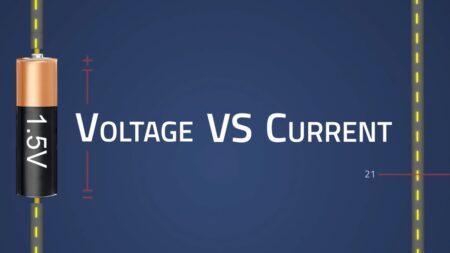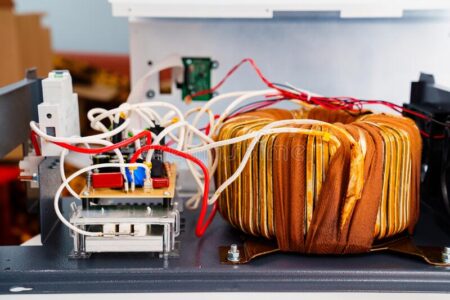When you discuss electrical terms, volts, amps, and watts are standard terms used globally. So let us discuss the definitions of these terms and understand the concept. Besides, we shall examine the relation between these terms for everyone’s benefit.
What is Volt?
Volt is the standardized unit of electric potential. It is also known as electromotive force and represents the potential difference between any two points in a circuit. When a current measuring one ampere passes through a resistance of one ohm, a potential of one volt appears across the circuit.
In other words, Volt is described as the speed at which electrons move through the electrical circuit. Formula-wise, Voltage equals potential energy divided by charge.

In India, houses receive power from the electrical grid at 240V. Volt is named after Alessandro Volta, an Italian physicist who built the first batteries in 1800.
What is Watt?
While Volt represents the potential difference between two points, a watt is the unit of power an electrical device consumes. It is also defined as the rate of work done when a current of one amp flows through a circuit with a potential difference of one volt. The formula for calculating power is

Here is a more straightforward explanation for Watt. Watt is the power an electrical device consumes to do work. For instance, a 40-watt electric bulb consumes 40 watts of electricity when it functions for one hour. The higher the wattage, the more power consumption. Automatically, it results in better performance. For example, a 60-watt bulb is brighter than a 40-watt bulb but consumes more power.
Watt is calculated by multiplying voltage (pressure/speed) by amperage (volume). So, this definition says that the faster the electron moves through the circuit, the greater the volume it can hold. So, the wattage is higher. Watt derives its name from James Watt, one of the pioneers in developing the steam engine.
What is Amp?
Just as Volt is a unit of force and a Watt a unit of power, an Amp (Ampere) is a unit of current. It is the rate of current flowing through an electrical circuit. It is also denoted by the number of electrons moving through the wire. Domestic users can look for amps in circuit breakers, plug points, and switches. They are listed as 5A, 15A, 20A, and so on.
The larger the amperage, the more current can flow through the circuit. It explains why you connect heavy-duty electrical appliances like air conditioners, mixer grinders, and refrigerators to 15A or 30A plug points. On the other hand, the low consumption appliances like TVs connect to 5A points.
Amp got its name from the French physicist Andre Marie Ampere, one of the pioneers of electromagnetism.
The relation between Volts, Watts, and Amps
The following formulae should explain everything. First, they help determine the loads that voltage stabilizers or inverters can bear. Accordingly, it provides insight into the size of the inverter for your home or business.
Watts = Amps x Volts
Volt = Watts / Amps
Amps = Watts / Volts
Final words
We have discussed some common terminologies used in daily life. We experience these terms almost daily. This article helps explain the definition and concept to understand better the devices you use daily, especially the power they consume. In addition, it helps understand their efficiency.



